Landskapsfabrikken AS - Inge Dahlman
Akkarvikodden
Akkarvikodden offers the best reflection of the profile of the Norwegian Scenic Route Lofoten, with horizontal planes and bold lines.
- Landscape architect:
- Landskapsfabrikken AS - Inge Dahlman
- Architect:
- manthey kula as
- Finished:
- 2009
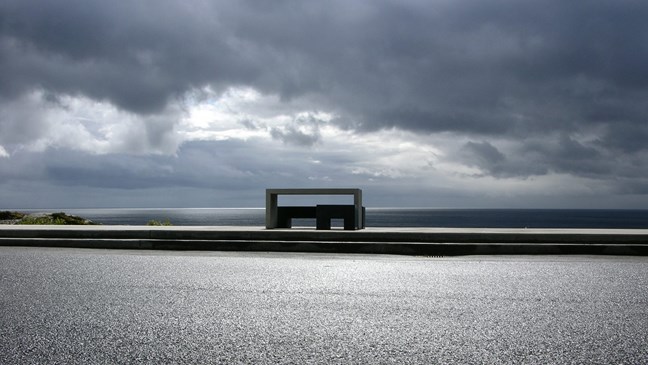
The main idea behind the design of this rest area was to raise a podium in the landscape to reflect the ocean surface, the horizon and the mountains behind the site. A long concrete terrace has been placed on the promontory near the open ocean. The groups of furniture on the terrace are placed in a rotated fashion, so that visitors must actively choose their own position in relation to the surroundings. At the back, the rest area is bordered by a natural stone wall that establishes a precise visual delimitation towards the mountains and screens the site off from the road. The terrace and the tables are made of concrete, while the benches and walls are cut from local Lødingen granite at various stages of processing.
The service building appears as a clean-cut geometrical shape which is closed off from its surroundings and open to the light from the sky. The dramatic landscape is blocked out. From a distance, the building is perceived as a landmark.
The rest area is designed by Landskapsfabrikken AS - Inge Dahlman
The service building is designed by manthey kula as
Austnesfjorden
This rest area offers a magnificent view over the Austnesfjord and the chapel at Sildpollneset promontory.
- Landscape architect:
- Landskapsfabrikken AS - Inge Dahlman
- Finished:
- 2010
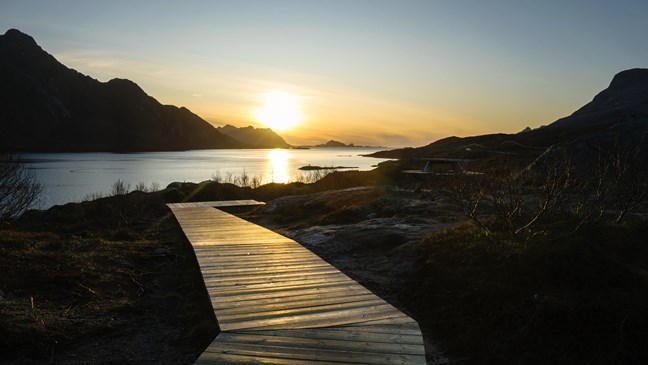
The chapel is one of the most frequently photographed spots in the entire Lofoten archipelago. Large numbers of visitors had completely eroded the vegetation. A wooden walkway was therefore built up to the top of the Austneset promontory. From the car park, a viewing platform has been established to provide access to the view also for those with reduced mobility.
Folldal gruver
The Folldal mines are among Norway’s ten most important historical industrial sites, and the area is protected under the Cultural Heritage Act.
- Landscape architect:
- Landskapsfabrikken AS - Inge Dahlman
- Finished:
- 2011
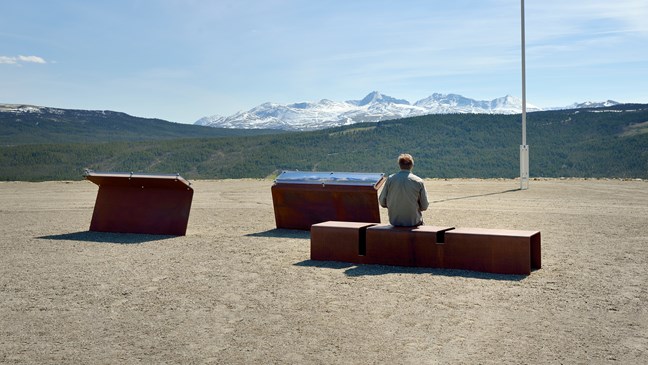
The Folldal mines are an old mining community located on the Norwegian Scenic Route Rondane, built around the copper mine that was established in 1784. The Folldal mines are among Norway’s ten most important historical industrial sites, and the area is protected under the Cultural Heritage Act. The intervention has therefore been planned in collaboration with cultural heritage authorities and the Folldal Mines Foundation.
The assignment consisted in establishing an unmanned information point on the Rondane national park and the mining facility, to be located at the gravel site on the slag tip in front of the old mine, and moreover to organize the parking area and ensure an inviting access for visitors coming from the car park to the visitors’ centre. The attraction on the site is the historical mining community. The information point was given a plain and subdued design. The materials are mainly those primarily used in existing structures on the site: corroded steel, sand and gravel.
Hellåga
Hellåga rest area is located on the northern shore of the Sjona fjord, with a view towards the archipelago in the west.
- Landscape architect:
- Landskapsfabrikken AS - Inge Dahlman
- Architect:
- Nordplan AS - Arild Waage
- Finished:
- 2006
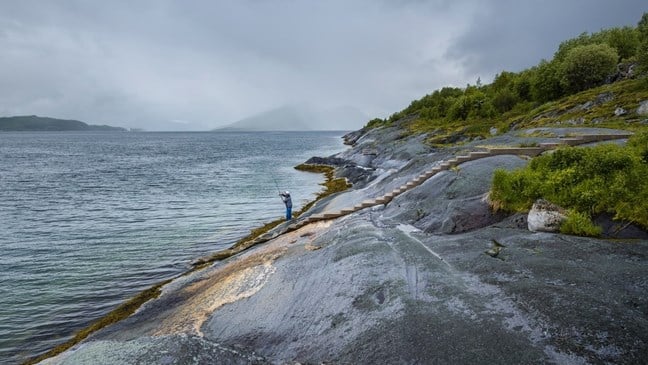
Its striking service building has the shape of a wave, built as a unique concrete structure with a façade covered in tempered glass. The site also has a waste-dumping station for camper vans.
This project was developed on the site of a previous rest area. The main intention of the landscape architect was to reflect the long lines of the mountain formations on the other side of the fjord, as well as to improve accessibility to the water’s edge. The rest area was designed on the basis of two different impressions of the landscape. From the large gravel-covered terrace the view opens to the immensity of the landscape, with the ocean and the mountainsides, and across the fjord to the sky and the view of the archipelago. From the gravel terrace, visitors are guided down to the sea below, where benches are spread out over the rocks.
The servicebuilding is designed by Nordplan AS - Arlild Waage
The rest area is designed by Landskapsfabrikken AS - Inge Dahlman
Kleivodden
Where the mountains plunge into the sea on the island of Andøya lies Kleivodden.
- Landscape architect:
- Landskapsfabrikken AS - Inge Dahlman
- Finished:
- 2013
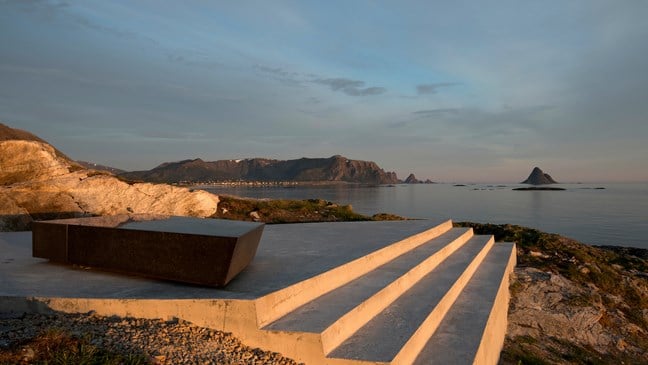
From here you have a view towards the open sea, sandy beaches, mountain peaks and the cultural landscape around the village of Bleik.
The task here was to clean up the area, facilitate parking, and, not least, create an attractive viewpoint.
Simple surfaces and steps in polished concrete connect the facility to the terrain and highlight the view and the landscape. The surfaces are broken only by matte polished stones of local Lødingen granite that reflect the light and the sky and provide durable seats.
Lillefjord
The bridge leads to a path on the south side, where heather covers the river delta in a lush green carpet.
- Architect:
- PUSHAK arkitekter
- Landscape architect:
- Landskapsfabrikken AS - Inge Dahlman
- Finished:
- 2006
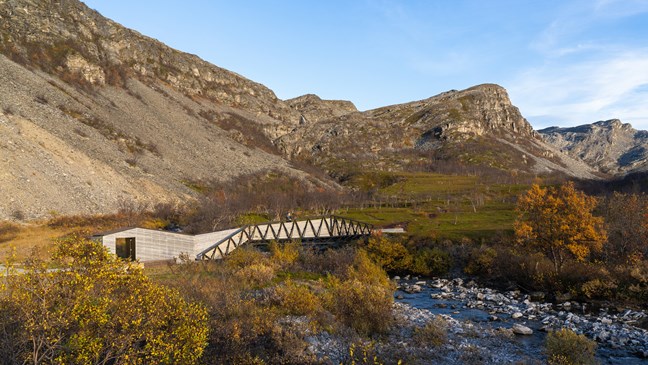
In addition to providing travellers with service facilities, benches, shelter and a car park, the rest area at Lillefjord on the Norwegian Scenic Route Havøysund was intended as the starting point for hikes to a waterfall further up the valley. To draw attention to this hiking opportunity, we decided to build a new bridge in a spot that would render it highly visible from the road.
In fact, all the service functions in this rest area are housed inside the bridge. At the start of the bridge near the car park is a space with benches and a shelter with access to the service facilities. From there, the bridge continues in a flight of stairs leading to a platform with benches, directly above the river. The bridge is held up by a prefabricated steel frame. The construction and the materials are adapted to the stark character of the landscape and the harsh local climate. The copper-clad roof and the greying woodwork are maintenance-free. The wood panelling inside the body of the bridge also forms the seats, back supports and railings. The direction of the panelling follows the changing directions of the bridge’s structure.